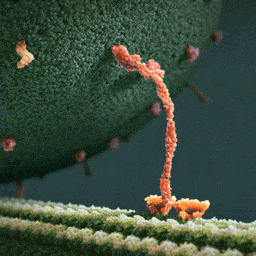A Fascinating New Science Experiment Proves That We Can Grow Babies Outside Of Their Mother’s Womb


A fascinating new science experiment proves that we can grow babies outside of their mother’s womb
Keep reading
More Posts from Science-is-magical and Others
Here are 17 jaw-dropping photos of space that show us just how small we really are:
This photo of the moon and Earth taken from the International Space Station.

A dwarf galaxy, about 11 million light-years away from us.

Earth as seen from the moon in 1968.

A cluster of stars, 20,000 light-years away from Earth.

The first flower grown in the International Space Station, photographed by astronaut Scott Kelly.

Saturn, seen through an infared filter.

These visible “loops” on the surface of the sun can reach up to 15 times the diameter of Earth in height.

The Northen Lights just North of Chicago, viewed from the International Space Station.

The Quintuplet Cluster, located 100 light-years from the center of our galaxy.

Pluto and one of its moons, Charon.

The Great Pyramids of Giza, seen from space.

Astronaut Bruce McCandless maneuvering, untethered, above Earth in 1984.

Galaxy NGC 6240, 400 million light-years away from Earth.

Palomar 12, a cluster of stars on the outskirts of the Milky Way.

The remnants of an exploded star.

New York City, seen from the International Space Station.

And the remains of a supernova whose explosion may have been seen almost 2,000 years ago by Chinese astronomers.
Follow @the-future-now
Baby are we subatomic particles in the pull of a quark, because I feel an innate attraction helping us overcome our initial repulsion

There’s Evidence of a New Ninth Planet. For real!
Caltech researchers have found evidence of a giant planet tracing a bizarre, highly elongated orbit in the outer solar system. The object, nicknamed Planet Nine, has a mass about 10 times that of Earth and orbits about 20 times farther from the sun on average than does Neptune, farthest planet from the Sun. In fact, it would take this new planet between 10,000 and 20,000 years to make just one full orbit around the sun.
Planetary scientists, Konstantin Batygin and Mike Brown, describe their work in the current issue of the Astronomical Journal and show how Planet Nine helps explain a number of mysterious features of the field of icy objects and debris beyond Neptune known as the Kuiper Belt.
Unlike the class of smaller objects now known as dwarf planets, Planet Nine gravitationally dominates its neighborhood of the solar system. In fact, it dominates a region larger than any of the other known planets.
Batygin and Brown predicted the planet’s existence through mathematical modeling and computer simulations but have not yet observed the object directly.
To put it briefly, Batygin and Brown inferred its presence from the peculiar clustering of six previously known objects that orbit beyond Neptune. They say there’s only a 0.007% chance that the clustering could be a coincidence. Instead, they say, a planet has shepherded the six objects into their strange elliptical orbits, tilted out of the plane of the solar system. It wasn’t the first possibility they investigated and they ran different simulations until finding that an anti-aligned orbit of the ninth planet prevents the Kuiper Belt objects from colliding with it and keeps them aligned. read more here
Diagram: The six most distant known objects in the solar system with orbits beyond Neptune (magenta) all mysteriously line up in a single direction. Also, when viewed in three dimensions, they all tilt nearly identically away from the plane of the solar system. A planet with in a distant eccentric orbit anti-aligned with the other six objects (orange) is required to maintain this configuration. The diagram was created using WorldWide Telescope. Credit: Caltech/R. Hurt (IPAC)

Contamination-seeking drones - IBM Patent 9447448.
Stay back and let the drones do the dirty work. Patent 9447448 makes cognitive drones able to inspect and decontaminate places so humans don’t have to. The drones’ on-board AI system can collect and analyze samples, so it can identify and clean up any bacteria or outbreak. Meanwhile you get to hang back, safely out of harm’s way.
This is just one of the record-breaking 8,000+ patents IBM received this year. Explore the latest IBM patents. →


Your body is an incredibly bizarre machine.
“What you see is a myosin protein dragging an endorphin along a filament to the inner part of the brain’s parietal cortex which creates happiness. Happiness. You’re looking at happiness.”
-
 justremainingmyself liked this · 1 year ago
justremainingmyself liked this · 1 year ago -
 nocatnocradle liked this · 5 years ago
nocatnocradle liked this · 5 years ago -
 homemeansthehills reblogged this · 5 years ago
homemeansthehills reblogged this · 5 years ago -
 c-tree-p-o liked this · 5 years ago
c-tree-p-o liked this · 5 years ago -
 himbo-kronk-stan liked this · 5 years ago
himbo-kronk-stan liked this · 5 years ago -
 marshmallowdoritos liked this · 5 years ago
marshmallowdoritos liked this · 5 years ago -
 hyliangremlin64 reblogged this · 5 years ago
hyliangremlin64 reblogged this · 5 years ago -
 kat-ousian liked this · 5 years ago
kat-ousian liked this · 5 years ago -
 geniuslolayds reblogged this · 5 years ago
geniuslolayds reblogged this · 5 years ago -
 geniuslolayds liked this · 5 years ago
geniuslolayds liked this · 5 years ago -
 ladyamaltheas reblogged this · 5 years ago
ladyamaltheas reblogged this · 5 years ago -
 backlitrabbit reblogged this · 5 years ago
backlitrabbit reblogged this · 5 years ago -
 kryptonfriend liked this · 5 years ago
kryptonfriend liked this · 5 years ago -
 the-real-fandom-person reblogged this · 5 years ago
the-real-fandom-person reblogged this · 5 years ago -
 the-real-fandom-person liked this · 5 years ago
the-real-fandom-person liked this · 5 years ago -
 natymxoxo reblogged this · 5 years ago
natymxoxo reblogged this · 5 years ago -
 rainbowfoam liked this · 5 years ago
rainbowfoam liked this · 5 years ago -
 suzums63 liked this · 5 years ago
suzums63 liked this · 5 years ago -
 blushhour reblogged this · 5 years ago
blushhour reblogged this · 5 years ago -
 blushhour liked this · 5 years ago
blushhour liked this · 5 years ago -
 puddle-of-awesomeness reblogged this · 5 years ago
puddle-of-awesomeness reblogged this · 5 years ago -
 wintershadows reblogged this · 5 years ago
wintershadows reblogged this · 5 years ago -
 saherziaa reblogged this · 5 years ago
saherziaa reblogged this · 5 years ago -
 deceasedtony reblogged this · 5 years ago
deceasedtony reblogged this · 5 years ago -
 ima-narwhal liked this · 5 years ago
ima-narwhal liked this · 5 years ago -
 r0-bartics liked this · 5 years ago
r0-bartics liked this · 5 years ago -
 teacup-siren liked this · 5 years ago
teacup-siren liked this · 5 years ago -
 tiphgor liked this · 5 years ago
tiphgor liked this · 5 years ago -
 since-whennn liked this · 5 years ago
since-whennn liked this · 5 years ago -
 girlandlaptop reblogged this · 5 years ago
girlandlaptop reblogged this · 5 years ago -
 sketch-ice reblogged this · 5 years ago
sketch-ice reblogged this · 5 years ago -
 lovenderloathe reblogged this · 5 years ago
lovenderloathe reblogged this · 5 years ago -
 droppedstitches72 liked this · 5 years ago
droppedstitches72 liked this · 5 years ago -
 agniezcka reblogged this · 5 years ago
agniezcka reblogged this · 5 years ago -
 yes-that-one-weird-girl reblogged this · 5 years ago
yes-that-one-weird-girl reblogged this · 5 years ago -
 homemeansthehills reblogged this · 5 years ago
homemeansthehills reblogged this · 5 years ago




